Just a few years in the past, every time I revealed a brand new article right here, I might simply
announce it on Twitter, which appeared to assist appeal to readers who would discover
the article worthwhile. For the reason that Muskover, Twitter’s significance has
declined sharply. It now would not take very a lot time in any respect for me to test
posts of individuals I observe on X (Twitter), since most of them have left.
As a substitute I am taking a look at different social websites, and posting there too. Now once I
announce a brand new article, I put up on LinkedIn, Bluesky, Mastodon, in addition to X
(Twitter). (I additionally put up into my RSS feed, which remains to be my favourite option to
let individuals know of latest materials, however which will simply reveal I am caught in an
idyllic previous.)
Whereas it is one factor to have a intestine really feel for the significance of those
platforms, I would somewhat collect some extra goal knowledge.
One supply of information is what number of followers I’ve on the these
platforms.
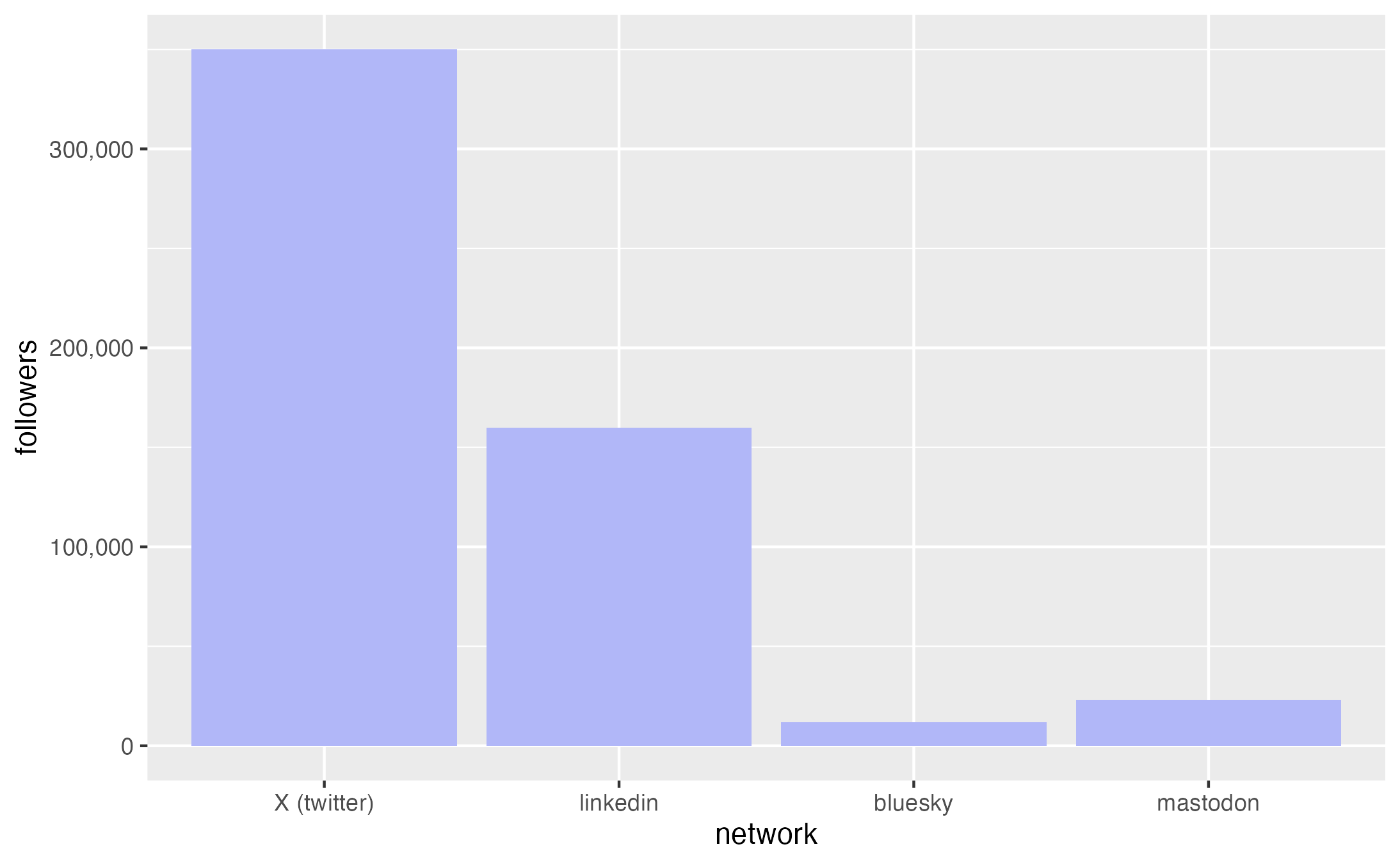
Right here X (Twitter) reveals a notable lead, however I strongly suspect that
lots of my followers there are inactive (or bots). Contemplating I solely joined
LinkedIn a couple of yr in the past, it is developed a wholesome quantity.
On condition that I made a decision to take a look at exercise based mostly on my latest posts. Most
of my posts to social media I make throughout all these platforms, tweaking them
somewhat bit relying upon their norms and constraints.
For this train I took 24 latest posts and checked out what exercise they
generated on every platform.
I will begin with reposts. Though some LinkedIn posts get
reposted extra usually than X, the median is fairly shut. Bluesky trails a bit
behind, however nowhere close to so far as the follower rely would counsel.
Mastodon, as we’ll see with all three stats, is much smaller.
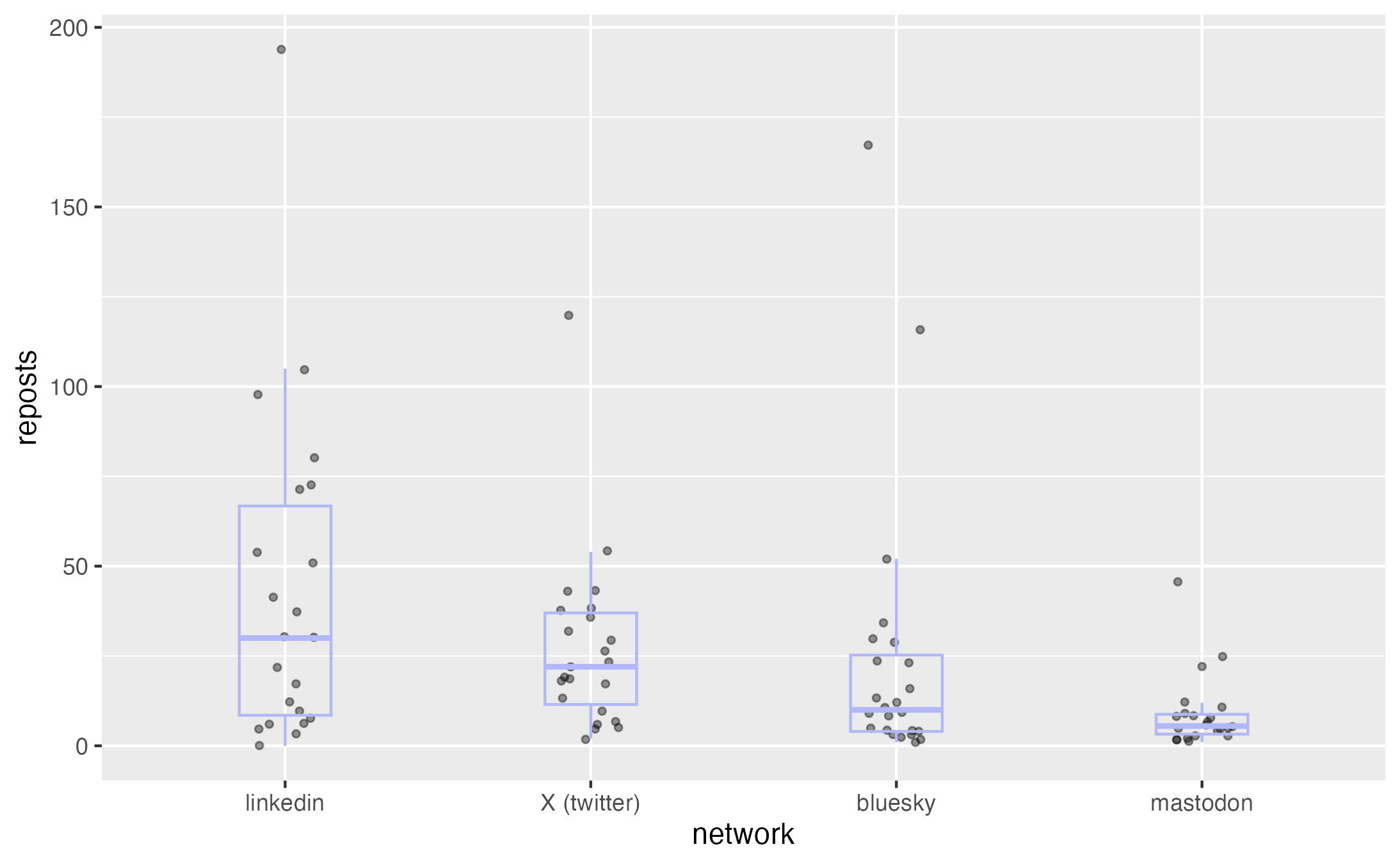
Determine 2: Plot of reposts
This plot is a mixed strip chart and field plot. When visualizing knowledge,
I am suspicious of utilizing aggregates equivalent to averages, as averages can usually
cover quite a lot of necessary info. I a lot
want to plot each level, and on this case a stripchart does the trick. A strip chart plots
each knowledge level as a dot on a column for the class. So each dot within the
linkedIn column is the worth for one linkedin put up. I add some horizontal
jitter to those factors so they do not print on prime of one another. The strip
charts enable me to see each level and thus get a superb really feel of the
distribution. I then overlay a boxplot, which
permits me to check medians and quartiles.
Shift over to likes nonetheless, and now LinkedIn is much above the others, X
and Bluesky are about the identical.
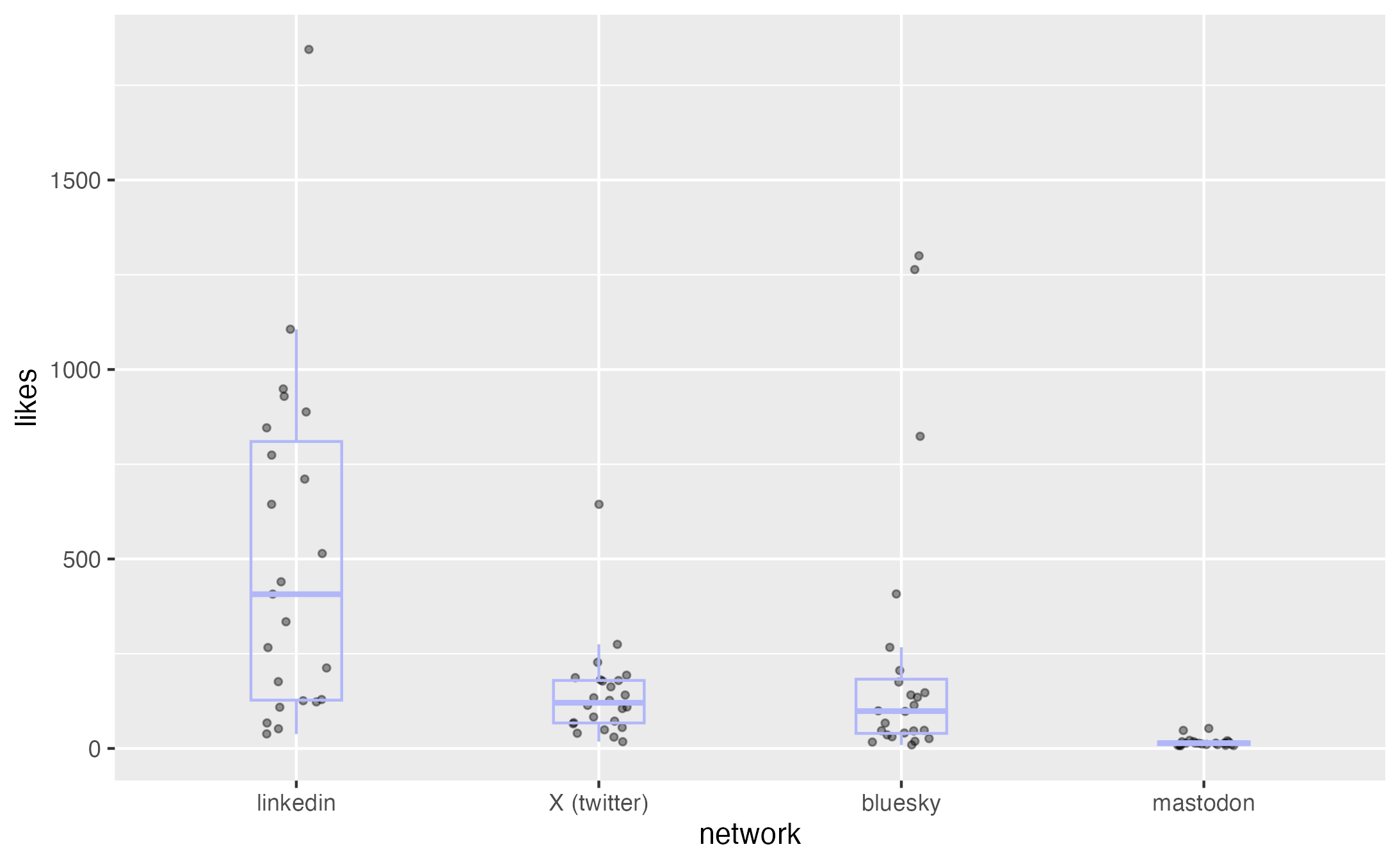
Determine 3: Plot of likes
With replies LinkedIn is once more clearly
averaging extra, however bluesky does have a major variety of closely
replied posts that push its higher quartile far above the opposite two providers.
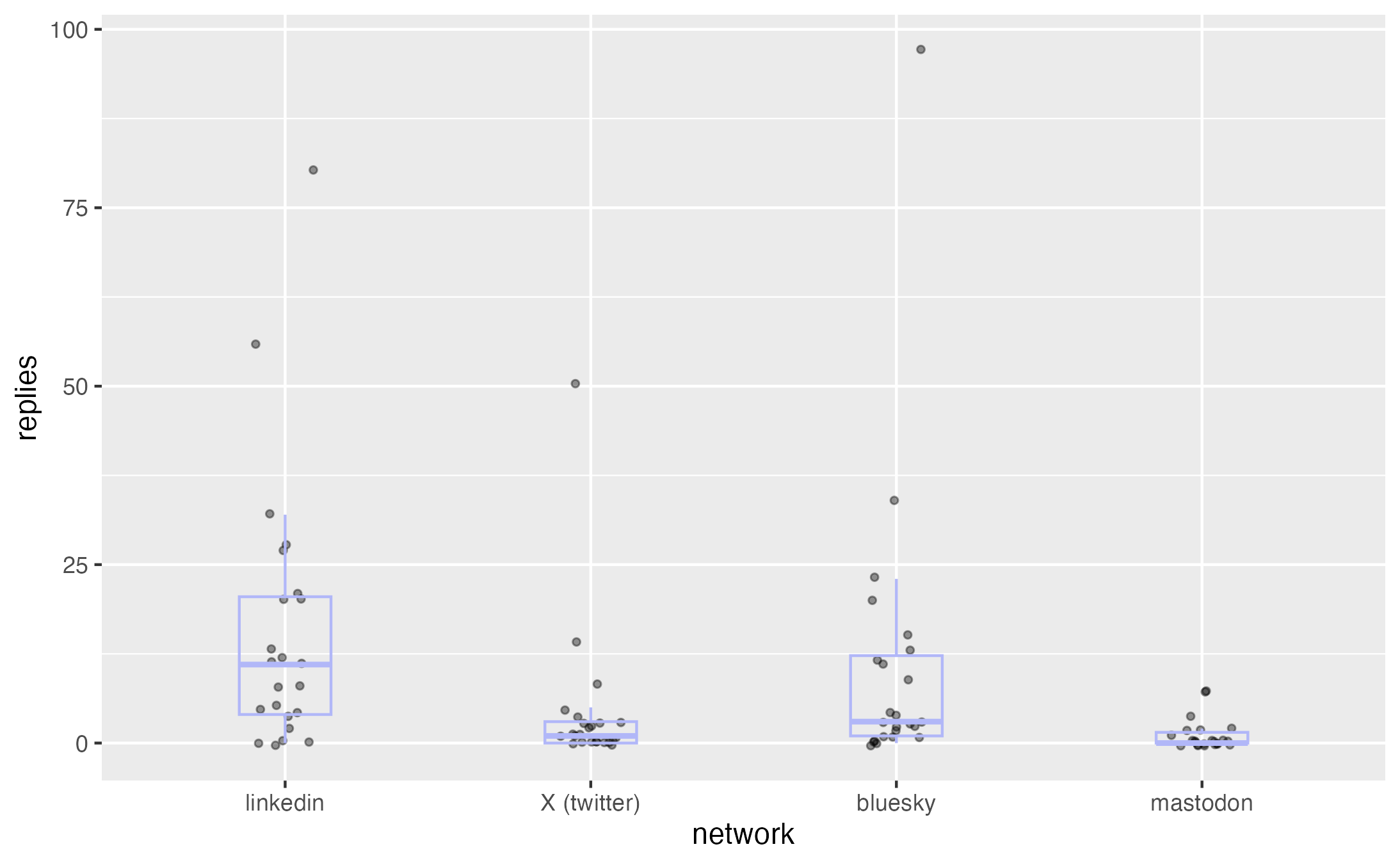
Determine 4: Plot of replies
That is trying on the knowledge, how may I interpret this when it comes to the
significance of the providers? Of the three I am extra inclined to worth the
reposts – in any case that’s somebody considering the that put up is effective
sufficient to ship out to their very own followers. That signifies a transparent pecking
order with LinkedIn > X > Bluesky > Mastodon. It is attention-grabbing that LinkedIn
is a extra singular chief on likes, it appears each increased itself and X is
decrease. I suppose meaning LinkedIn individuals are extra desperate to hit the like button.
As for replies, it is attention-grabbing to see that Bluesky has generated fairly
a couple of posts which have triggered plenty of replies. However given that almost all replies
aren’t precisely insightful, I do not chalk that up as a optimistic. Certainly I see
extra inane and downright imply replies on Bluesky than I ever obtained on Twitter.
In distinction, whereas Mastodon replies are a lot fewer, they much more more likely to
be value studying.
An apparent additional query to take a look at can be how many individuals click on on
the hyperlink and go on to learn the article. To trace that info, I would want
so as to add monitoring attributes to my URLs (eg
?utm_source=mastodon&utm_medium=social). I’ve not completed
that, partly as a result of I all the time disliked such cluttered URLs, however principally
as a result of I do not assume I would get sufficient worth from the knowledge to be definitely worth the bother.
What I can do, nonetheless, is have a look at the supply info for all visitors
to the positioning. This is a plot of engaged periods for the primary quarter of every
the final three years.
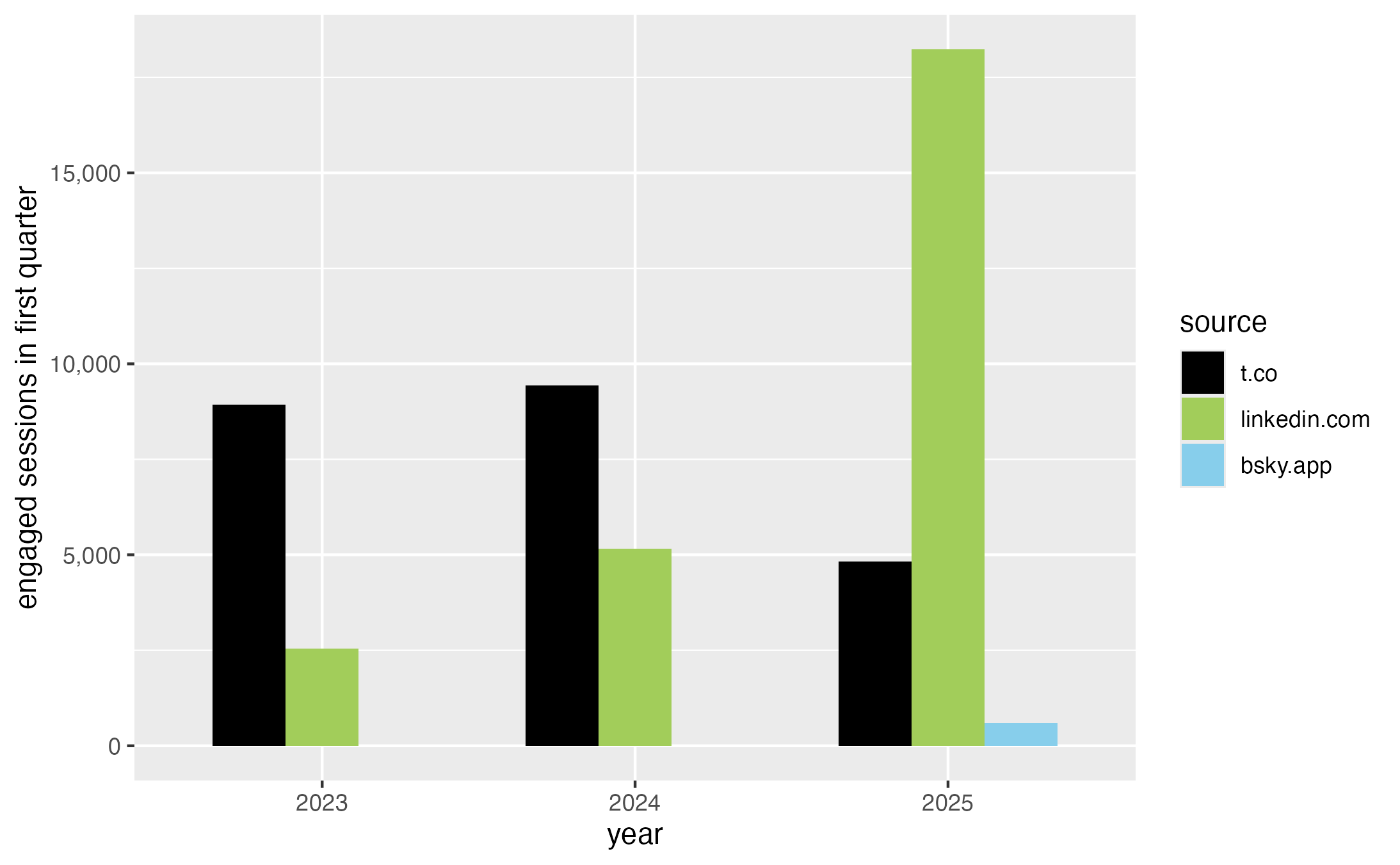
As we are able to see X (Twitter) was the dominant determine in 2023 however in 2025
LinkedIn has surged to a a lot higher quantity of visitors. Bluesky is hardly
seen. (I am unable to monitor Mastodon this manner.)
LinkedIn has certainly shot to #3 supply to this point this yr. However #3 is a protracted
method from the primary two (google and direct).
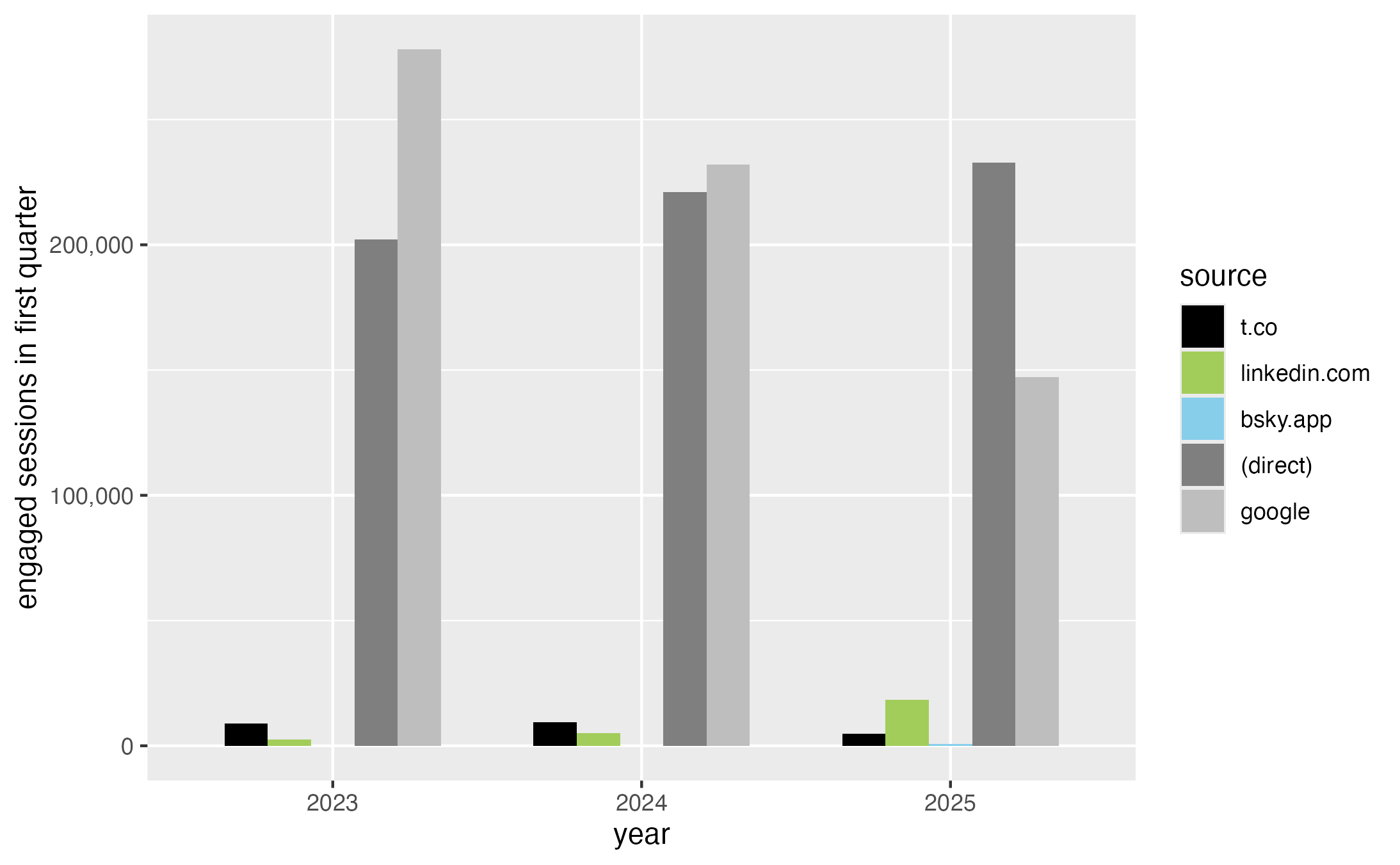
LinkedIn could also be #3, however is the supply for under 3.3% of the positioning’s visitors.
One of many causes for that is that social media posts could drive visitors
to new articles, however most of my visitors is for older materials. 80% of the
visitors to my web site goes to articles which are over six months outdated.
General, I would say that LinkedIn has taken over because the primary social
community for my posts, however X (Twitter) remains to be necessary. And Bluesky is
by far essentially the most energetic on a per-follower foundation.


